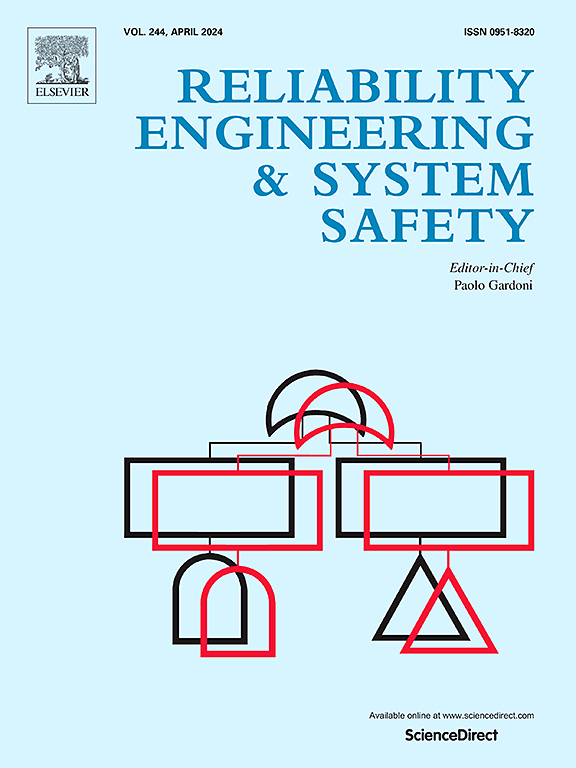Joint reliability of linear two-dimensional consecutive k-type systems with shared components
IF 11
1区 工程技术
Q1 ENGINEERING, INDUSTRIAL
引用次数: 0
Abstract
In this paper, linear two-dimensional consecutive -type systems with shared components are considered for the first time. This includes the cases of linear connected--out-of-: F systems, linear connected--or--out-of-: F systems, linear -connected--out-of-: F systems without/with overlapping, and linear -connected--or--out-of-: F systems without/with overlapping. Using Kronecker product, finite Markov chain imbedding approach (FMCIA) is applied in a new way to derive the joint reliability functions of these two-dimensional consecutive -type systems with shared components. Their accuracy and computational efficiency are illustrated with the use of some numerical examples. Finally, some concluding remarks are provided.
具有共享构件的线性二维连续k型系统的联合可靠性
本文首次考虑了具有共享分量的线性二维连续k型系统。这包括线性连通-(k,r)-out of-(m,n): F系统,线性连通-(k,r)-or-(r,k)-out of-(m,n): F系统,线性l-连通-(k,r)-out of-(m,n): F系统,线性l-连通-(k,r)-or-(r,k)-out of-(m,n): F系统,线性l-连通-(k,r)-or-(r,k)-out of-(m,n): F系统,无/有重叠。利用Kronecker积,将有限马尔可夫链嵌入法(FMCIA)应用于这些具有共享构件的二维连续k型系统的联合可靠度函数的推导。通过算例说明了这些方法的精度和计算效率。最后,结束语。
本文章由计算机程序翻译,如有差异,请以英文原文为准。
求助全文
约1分钟内获得全文
求助全文
来源期刊

Reliability Engineering & System Safety
管理科学-工程:工业
CiteScore
15.20
自引率
39.50%
发文量
621
审稿时长
67 days
期刊介绍:
Elsevier publishes Reliability Engineering & System Safety in association with the European Safety and Reliability Association and the Safety Engineering and Risk Analysis Division. The international journal is devoted to developing and applying methods to enhance the safety and reliability of complex technological systems, like nuclear power plants, chemical plants, hazardous waste facilities, space systems, offshore and maritime systems, transportation systems, constructed infrastructure, and manufacturing plants. The journal normally publishes only articles that involve the analysis of substantive problems related to the reliability of complex systems or present techniques and/or theoretical results that have a discernable relationship to the solution of such problems. An important aim is to balance academic material and practical applications.
 求助内容:
求助内容: 应助结果提醒方式:
应助结果提醒方式:


